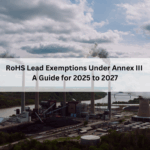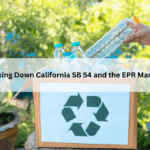In response to growing concerns about the environmental persistence and potential health risks of per- and polyfluoroalkyl substances (PFAS), the European Chemicals Agency (ECHA) is taking action within the ambit of REACH, the European Union’s regulatory framework for chemicals. PFAS, known for their unique properties like resistance to heat, water, and oil, are extensively utilized across various industries. Yet, their durability and possible adverse effects on health have prompted urgent regulatory scrutiny.
Problem:
The contamination caused by PFAS is linked to numerous health problems, such as cancer, immune system disturbances, and developmental issues. Due to their environmental persistence, PFAS accumulate in living organisms and extensively contaminate water, soil, and wildlife. The lack of thorough regulatory measures has enabled PFAS to permeate a wide range of consumer goods, industrial activities, and materials, thereby presenting significant threats to human health and the ecological balance.
Solution:
- ECHA, in collaboration with its scientific committees for Risk Assessment (RAC) and Socio-Economic Analysis (SEAC), is leading the charge in evaluating and potentially restricting PFAS under REACH.
- The proposed restrictions seek to curtail the production, usage, and release of PFAS across multiple sectors, thereby reducing exposure and mitigating environmental contamination.
- Through a systematic assessment of proposals in batches and a focus on specific sectors, ECHA ensures a thorough examination of potential impacts and the feasibility of restrictions.
Upcoming Meetings:
March 2024:
Discussions on PFAS hazards in consumer mixes, cosmetics, and ski wax (reported by RAC) and the general strategy (exclusive to SEAC).
June 2024:
Debate on risks in metal plating and metal goods production (by RAC).
September 2024:
Focus on petroleum and mining, food contact materials and packaging, and textiles, furniture, leather, clothes, and carpets (TULAC).
The repercussions :
- Restricting PFAS usage can halt further environmental contamination, safeguarding ecosystems and wildlife from these persistent chemicals.
- Minimizing human exposure to PFAS through regulated consumer products, industrial processes, and materials can protect public health and reduce associated health issues.
- Implementing targeted restrictions based on sector-specific considerations enables more effective regulation without overburdening industries or compromising product safety and functionality.
ECHA’s proactive approach towards evaluating and potentially restricting PFAS under REACH underscores a commitment to tackling emerging chemical risks and safeguarding human health and the environment.
Collaboration among regulatory authorities, scientific committees, industry stakeholders, and the public is paramount to ensuring the effectiveness and feasibility of proposed PFAS restrictions.
ComplianceXL aids businesses in achieving PFAS regulatory compliance by compiling pertinent data related to PFAS for their products. Moreover, we offer ongoing maintenance services to ensure the integrity and currency of regulatory documentation for our clients moving forward.
FAQs:
Q: What specific sectors are being addressed in the upcoming committee meetings?
A: The sectors under discussion include consumer mixtures, cosmetics, ski wax, metal plating, metal product manufacturing, textiles, upholstery, leather, apparel, carpets, food contact materials, packaging, petroleum, and mining.
Q: How will feedback from the consultation process be incorporated into the proposal?
A: The five national authorities responsible for the proposal will revise and update it based on the comments received during the consultation. This updated proposal will serve as the foundation for the scientific committees’ evaluations and subsequent recommendations.





